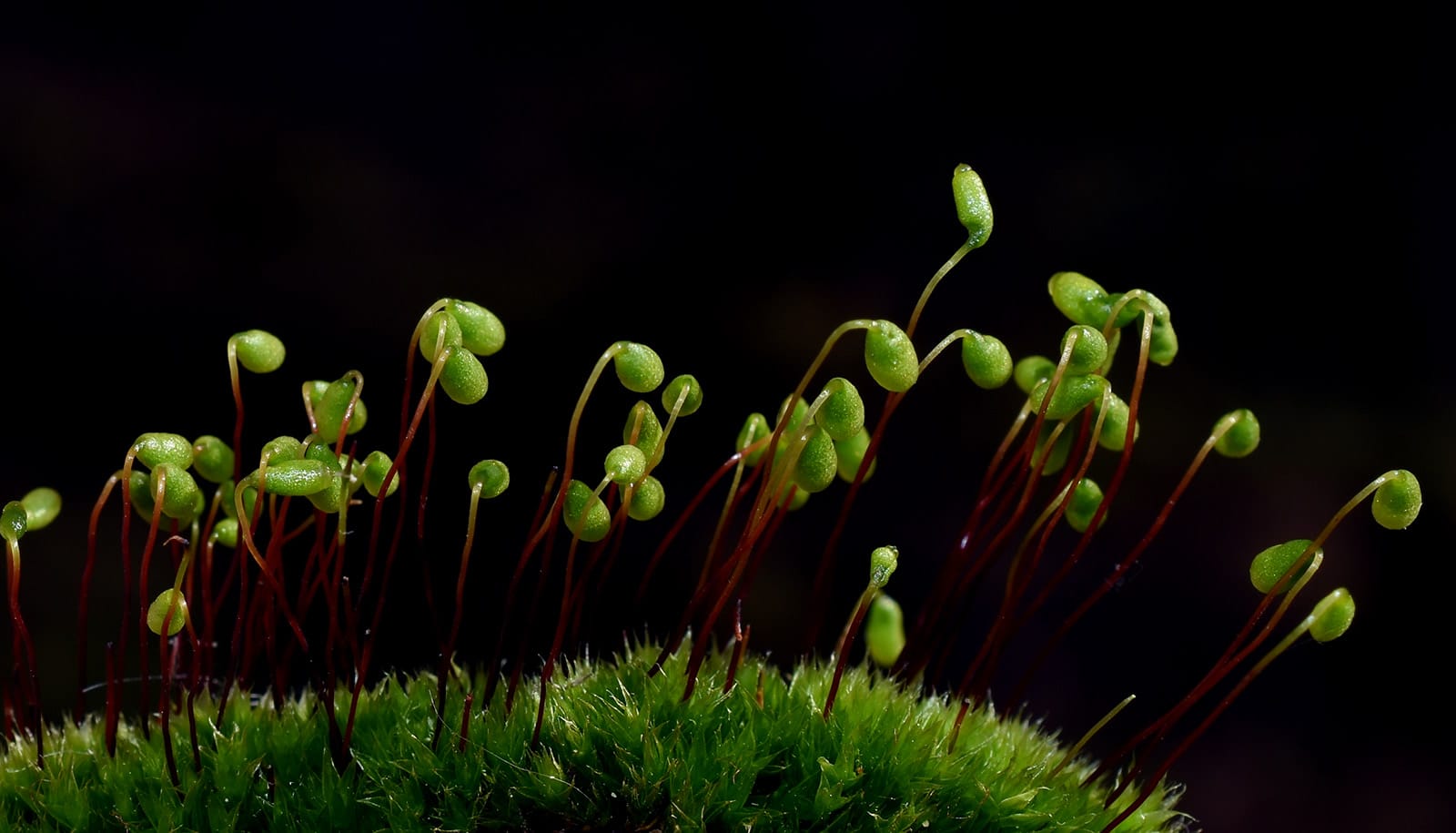
The study indicates how one of the world's most widespread moss species, Ceratodon pupureus , also known as fire moss, purple horn toothed moss, etc., has managed to inhabit every crevice and corner of the planet. (Credit: Getty Images )
How lowly moss spread all over the world
Global wind systems have transported moss along Earth's latitudes, to rooftops, sidewalks, and lawns worldwide, and as far away as Antarctica.
New research reveals how mosses became one of our planet’s most widely distributed plants.
Global wind systems transport them along Earth’s latitudes, to rooftops, sidewalks, and lawns worldwide, and as far away as Antarctica, the study shows. The finding offers a better understanding of how other small organisms are spread, including airborne bacteria and organisms that produce airborne spores.
For the study, researchers from the Natural History Museum of Denmark at the University of Copenhagen studied how one of the world’s most widespread moss species, Ceratodon pupureus , also known as fire moss, purple horn toothed moss, etc., has managed to inhabit every crevice and corner of the planet.
“We found a remarkable overlap between global wind patterns and the way in which this moss species has spread over time, one that we haven’t been aware of until now,” says evolutionary biologist Elisabeth Biersma of the Natural History Museum of Denmark, who is the study’s lead author.
According to Biersma, this means that much of the moss Danes find commingling with their lawn grass or lightly clinging to their rooftops is often part of the same population found on another continent at a similar latitude. For example, moss spores from North America are likely blown by the prevailing Westerlies across the Atlantic to Denmark.
Mosses (Bryophyta) are one of the oldest plant groups on Earth and characterized by their lack of roots. Most groups grow in damp, shady places, while others tolerate bright and dry environments.
“Mosses are extremely resilient organisms that can both suck up a lot of water and tolerate considerable desiccation. Most other plants are far from being as resistant to harsh environments such as rooftops, sidewalks, or polar climates. Along with the wind, this has been the key to the great success of mosses the world over,” explains Biersma.
There are roughly 12,000 moss species worldwide. In the study, researchers used moss samples sourced from dried plant collections called herbaria, from around the world. Using genetic samples of the mosses, the researchers built an extensive evolutionary tree that helped them map the various moss populations.
The researchers’ analyses demonstrate that the current distribution pattern of C. purpureus has occurred over the last ~11 million years. But the fact that it has taken so long for C. purpureus to spread to the places where it is found today comes as a bit of a surprise.
“This can probably be explained by the fact that global wind systems can partly disperse spores over a long distance, but also restrict global dispersion as wind systems are self-enclosed and isolated transport systems, which thereby restrict any spreading beyond them,” explains Biersma.
This is the first time that the researcher has seen such a uniform pattern of proliferation across the globe, as demonstrated with C. pupureus . The knowledge may be transferable elsewhere.
“These findings could help us understand the spread of other organisms, such as bacteria, fungi, and some plants, which are also spread via microscopic airborne particles transported by the wind. But only the future can say whether this knowledge is applicable to other organisms,” says Biersma.
The research appears in the journal Frontiers in Plant Science .
Source: University of Copenhagen
The post How lowly moss spread all over the world appeared first on Futurity .
Share this article:
This article uses material from the Futurity article, and is licenced under a CC BY-SA 4.0 International License. Images, videos and audio are available under their respective licenses.
Related Articles:
Earth-changing asteroid impact theory gets new evidence
March 20, 2019 • futurityHow a favorite dinosaur food survived mass extinction
Nov. 17, 2023 • futurityLinks/images:
- https://www.futurity.org/vegetables-gardens-1248042/
- https://www.futurity.org/hornwort-crops-plants-genomes-2307382/
- https://doi.org/10.3389/fpls.2020.502359
- https://www.science.ku.dk/english/press/news/2020/from-rooftop-dweller-to-vigorous-globetrotter--researchers-discover-the-secret-of-how-moss-spreads/
- https://www.futurity.org/moss-ceratodon-pupureus-wind-2469792-2/
- https://www.futurity.org


